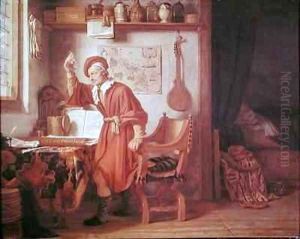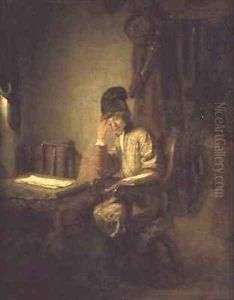Heiman Dullaert Paintings
Heiman Dullaert was a Dutch painter, poet, and engraver born in Rotterdam in 1636. Although not as widely recognized as some of his contemporaries, Dullaert made significant contributions to the Dutch Golden Age of painting, a period characterized by its emphasis on realism, attention to detail, and innovative use of light and shadow. His oeuvre mainly consists of portraits and religious subjects, imbued with a gentle realism and a delicate treatment of light, which shows the influence of Rembrandt, under whom he is thought to have studied.
Dullaert's artistic journey was intertwined with his intellectual pursuits. Apart from his visual artistry, he was also known for his poetry, which reflects the philosophical and moral themes of his era. His poems, often contemplative and imbued with a sense of piety, were well-regarded by his contemporaries, though they have not endured in popularity as much as his paintings.
Despite his talent, Heiman Dullaert never achieved great fame during his lifetime, and his works were somewhat forgotten until a resurgence of interest in the 19th and 20th centuries. This renewed interest helped to secure his place in the annals of Dutch art history, albeit as a modest figure compared to giants like Rembrandt and Vermeer. Dullaert's paintings today are appreciated for their emotional depth and technical skill, offering a window into the soulful and introspective aspects of Dutch Golden Age art.
Heiman Dullaert passed away in 1684 in Rotterdam. His legacy, encapsulated in a modest body of work, continues to be studied and admired for its contribution to the rich tapestry of 17th-century Dutch painting and poetry. His life and work exemplify the era's blending of artistic and literary culture, reflecting the broader intellectual currents of his time.

